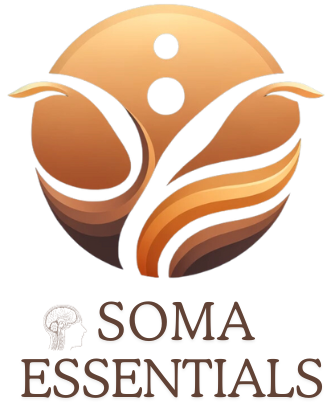Embodiment and Consciousness: Understanding the Mind-Body Connection
Embodiment and consciousness are two powerful concepts that have captured the minds of philosophers, psychologists, and scientists for centuries. Both are complex and elusive, yet intertwined in a way that offers a deeper understanding of the human experience. In recent years, the study of embodiment and consciousness has gained significant attention in the field of somatic psychology – a branch of psychology that focuses on the mind-body connection. This article will delve into the theories of somatic psychology and explore the intricate relationship between embodiment and consciousness. Through this exploration, we hope to shed light on this fascinating subject and provide a deeper understanding of our own existence. So, join us as we dive into the depths of embodiment and consciousness, and unravel the mysteries of the mind-body connection.
Embodiment and consciousness are key concepts in somatic psychology, a holistic approach to mental and physical health. This article will explore the mind-body connection and how somatic therapy, exercises, and psychology can improve overall well-being.
Firstly, it’s important to understand the concept of embodiment. This refers to our ability to be aware of and fully occupy our bodies, not just as physical beings, but as conscious beings with thoughts and emotions. In somatic psychology, embodiment is seen as essential for maintaining optimal mental and physical health. It allows us to tune into our body’s needs and respond to them in a healthy way.
Next, we’ll delve into the principles of somatic movement and healing. Somatic movements are gentle exercises that focus on connecting the mind and body through mindful movement. These movements can help release tension, increase body awareness, and improve overall physical functioning. Somatic healing involves using movement and touch to help individuals connect with their bodies and release stored emotions or trauma.
Somatic therapy is another aspect of somatic psychology that focuses on using the body as a tool for healing. This type of therapy can involve various techniques such as breathwork, body awareness exercises, and movement-based interventions. It aims to help individuals become more aware of their bodily sensations, thoughts, and emotions, and how they all interconnect.
In addition to somatic therapy, there is also somatic psychology which explores how our body influences our thoughts, emotions, and behavior. It recognizes the importance of the body in understanding mental health and well-being. Somatic psychology can help individuals develop a deeper understanding of themselves and their body’s role in their overall well-being.
To further enhance the mind-body connection, we can also incorporate somatic exercises into our daily routine. These exercises can range from simple mindful breathing to more complex movements that focus on specific areas of the body. By regularly engaging in somatic exercises, we can become more in tune with our bodies and better equipped to manage stress and improve our overall health.
In conclusion, embodiment and consciousness are essential concepts in somatic psychology that emphasize the mind-body connection. By incorporating somatic therapy, exercises, and psychology into our lives, we can improve our self-awareness, physical functioning, and overall well-being.
Somatic Exercises for Mind-Body Connection
Incorporating Mindful Movement into daily routine is a powerful way to strengthen the mind-body connection. These exercises involve bringing conscious awareness to movements and sensations in the body, promoting a deeper understanding and connection to oneself.
Somatic exercises can take many forms, such as yoga, tai chi, or even simple stretching and breathing exercises. The key is to approach these movements with intention and mindfulness, rather than just going through the motions.
By incorporating mindful movement into our daily routines, we can tap into the mind-body connection and improve our overall well-being. These exercises can help reduce stress and tension, increase physical strength and flexibility, and promote a sense of calm and balance.
In somatic psychology, these exercises are often used in conjunction with talk therapy to address both the mental and physical aspects of an individual’s well-being. By incorporating somatic exercises, individuals can gain a deeper understanding of their mind-body connection and work towards achieving a more integrated and balanced state of being.
The Role of Somatic Psychology
Somatic psychology recognizes the integral role that the body plays in our mental health. It views the body and mind as interconnected, and understands that our physical experiences can greatly impact our psychological well-being. In other words, our bodies hold valuable insights into our emotional and mental states, and by exploring these connections, we can improve our overall well-being.
Embodiment and consciousness are key concepts in somatic psychology. Embodiment refers to the idea that our bodies are not just physical vessels, but also hold our thoughts, emotions, and experiences. Consciousness, on the other hand, refers to our awareness and perception of our bodily sensations. Together, they form the mind-body connection that is crucial to our understanding of ourselves and our mental health.
Somatic psychology utilizes various techniques and therapies to tap into this mind-body connection and address any imbalances or issues that may be present. These can include somatic experiencing, body-centered psychotherapy, and even simple exercises like yoga or tai chi. By focusing on the body’s influence on mental health, somatic psychology offers a holistic approach to healing and improving overall well-being.
Somatic Therapy: Using the Body for Healing
Somatic therapy is a form of psychotherapy that focuses on the mind-body connection and uses the body as a tool for healing. This approach recognizes that our physical and emotional experiences are intertwined and that by working with the body, we can also address mental and emotional issues.
One of the key techniques used in somatic therapy is breathwork. This involves deep, conscious breathing to increase oxygen flow and release tension in the body. By focusing on the breath, individuals can become more aware of their physical sensations and emotions, and learn to regulate them in a healthier way.
Body awareness exercises are also commonly used in somatic therapy. These may include practices such as progressive muscle relaxation, where individuals tense and relax different muscle groups in their body to release tension and become more aware of their physical sensations. Other exercises may involve scanning the body for areas of tension and using gentle movements or stretches to release them.
Movement-based interventions are another important aspect of somatic therapy. This can include activities like yoga, dance, or other forms of physical movement that focus on connecting the mind and body. By incorporating movement into therapy, individuals can learn to express and release emotions in a safe and healthy way.
Embodiment and consciousness are key components of somatic psychology that highlight the importance of the mind-body connection. By incorporating somatic therapy, exercises, and psychology into our lives, we can improve our overall well-being and live a more fulfilling life.

